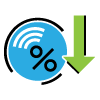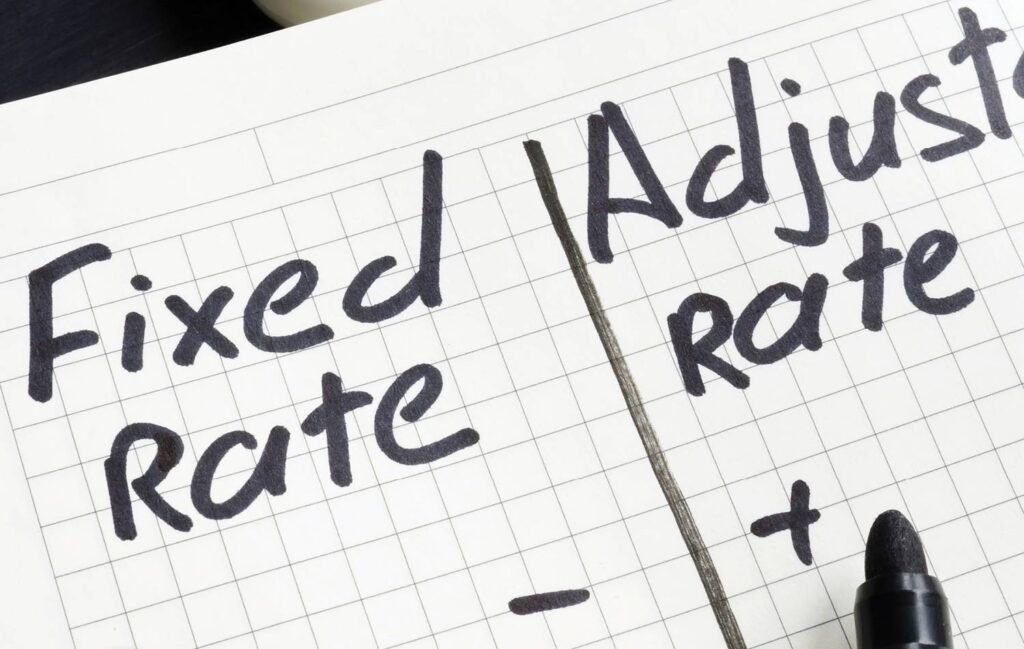
How do you determine if it’s worth refinancing your home loan?
Updated March 27, 2025, at 5:10 p.m. CT
Your mortgage payment is likely one of your biggest monthly expenses. But what if you could get a do-over on your loan to lower your payment, pay off your home sooner or get cash for a big expense?
That’s where a mortgage refinance comes in. Think of it like a reset button for your home loan.
But is refinancing your home loan worth it? Like so many things, it depends. Interest rates, closing costs and how long you plan to stay in your home all play a role in whether refinancing makes financial sense for you.
Learn the pros and cons of refinancing, when it might be worth it (and not), and how to get started.
How a mortgage refinance works
When you refinance, you’re essentially swapping your current home loan for a new one—often with a different interest rate, loan term or structure.
Many homeowners think about refinancing when interest rates drop or their financial needs change.
You take many of the same steps that you did when you applied for your original loan—except this time, you don’t have to move!
Here’s what to expect:
- You’ll apply for a new loan just like you did with your first mortgage.
- Your credit score will again be a factor in determining whether you qualify.
- You’ll likely pay closing costs, which can include lender fees, appraisal fees and other costs.

When does it make sense to refinance?
Homeowners typically refinance their loan for one of these reasons:
|1| Access cash from your home’s equity
If you’ve built up equity in your home (the part of the house that belongs to you, not your lender), you may be able to borrow against it with a cash-out refinance.
Here’s how it works:
- You replace your current home loan with a larger one.
- You receive the difference between your old and new loan in cash.
- You can use the lump sum toward debt consolidation, a home remodel or whatever your goal is.
A cash-out refinance is an alternative to a home equity line of credit or a home equity loan. (Learn how these work here.)
With a cash-out refinance, you’ll need to stay within your lender’s loan-to-value threshold. The loan-to-value is the mortgage amount divided by the appraised value of the property.
Let’s say your home is worth $400,000 and you owe $240,000 on the mortgage. If your lender allows you to borrow up to 80% loan-to value, you might refinance into a $320,000 loan and receive the $80,000 difference in cash.
“Many homeowners who do a cash-out refinance combine their payments for a shorter term and a higher monthly payment so they can pay that debt off faster,” said Dupaco’s Krystal Frederick.
A cash-out refinance does increase your loan balance, so you’ll want to be sure you can afford the new loan terms.
|2| Lower your interest rate
Many homeowners refinance their home loan to lock in a lower interest rate. A lower rate could:
- Reduce the total cost of your loan over time, because more of your payments can go toward the principal instead of toward interest.
- Lower your monthly payments, giving you more breathing room in your budget.
- Help you build equity in your home faster by paying down your principal more quickly.
Rule of thumb: Refinancing might make sense if you can reduce your interest rate by at least 0.5%, Frederick said. But not every situation is the same. Sometimes, even a small reduction can make a big difference in your monthly payment, depending on your loan balance and how long you plan to stay in your home.
See today’s mortgage refinance rates >
 |3| Lower your monthly payments
|3| Lower your monthly payments
A lower interest rate might also lower your monthly mortgage payments—sometimes saving you hundreds of dollars each year.
This can free up room in your budget to put more money toward your other goals.
Rule of thumb: It typically makes sense to refinance if you can cut your monthly payments by at least $100, Frederick said.
Try our free mortgage refinance calculator to see how refinancing would impact your monthly payment and overall loan costs.
|4| Shorten your loan term
If you want to pay off your home loan sooner, refinancing into a shorter term could be a smart move.
Depending on your situation, refinancing into a shorter term could either:
“If you can refinance into a shorter term and keep your payment the same, it could be worth it,” Frederick said.
|5| Get rid of private mortgage insurance
If you put down less than 20% when you bought your home, you’re probably paying private mortgage insurance. (This extra payment protects the lender in case you default on your loan.)
But now that you’ve been a homeowner for a while, your home’s value might have increased and you might have more equity in your home.
Refinancing could help you either reduce or get rid of your private mortgage insurance.
|6| Switch to a loan that better fits your needs
Your financial situation might have changed since you first bought your home. Refinancing could give you a chance to move from an adjustable-rate mortgage to a fixed-rate loan for more predictability.
Adjustable-rate mortgages often start with a lower interest rate. But after a set period, the rate can fluctuate, sometimes increasing your monthly payments.
Refinancing into a fixed-rate mortgage locks in your interest rate for the life of the loan, keeping your monthly principal and interest payment the same. This can make budgeting easier and give you peace of mind knowing exactly what to expect each month.
|7| Take advantage of in-house loan servicing
Some homeowners don’t realize that after taking out a mortgage, their loan might be transferred to another company for servicing. This means you could end up making payments to a company you didn’t choose. When this happens, you might have to update your payment details and adjust to a new customer service experience.
If consistency and personalized service matter to you, refinancing with a lender that services loans in-house could be a big advantage. Before refinancing, it’s worth asking what will happen with your loan after closing.
At Dupaco, loan servicing stays in-house. From the moment you apply to the day you make your final payment, you’re working with the same financial cooperative.
No surprises—just the confidence of knowing who to call when you have a question.
Questions about refinancing? Let’s talk >
When might refinancing not be worth it?
Refinancing can be a great tool if it saves you money, shortens your loan term or helps you in another way. But it isn’t right for everyone.
It’s important to weigh several factors and look at the overall costs of the loan.
“There are so many variables and scenarios that go into determining when a refinance is a good fit,” Frederick said.
Remember, refinancing costs money. It will take time to recoup closing costs before you ultimately benefit from any savings. Ask your lender what you’ll pay to refinance your loan.
Here are some reasons to think twice about refinancing:
|1| It extends your loan term too much
If you’ve only got a few years left on your mortgage and refinancing stretches out those payments over several years, you likely won’t come out ahead.
You could end up paying more in interest overall—even with a lower interest rate. Plus, you’ll be in debt even longer.
|2| You move too soon
If you plan to sell your home soon, you might not stay long enough to recoup the costs you paid to refinance.
|3| You use it to consolidate debt but keep borrowing
Using a cash-out refinance to combine multiple debts might provide you with a lower interest rate, lower monthly payment or both—with the convenience of only one monthly payment.
But if you continue taking on new debt, you could end up in a worse financial position.
A cash-out refinance uses your home as collateral, which helps protect your lender. If you can’t make payments, your lender can take your home and sell it to attempt to recoup its losses.
So, it’s important to avoid overspending and to borrow responsibly by making consistent, on-time payments.
How to calculate if it’s worth refinancing
The good news is that you can estimate whether you’ll save money by refinancing before you even apply.
With our free mortgage refinance calculator, you can get a feel for how refinancing could impact your monthly payment and overall loan costs.
Try the refinance calculator >
The calculator considers:



